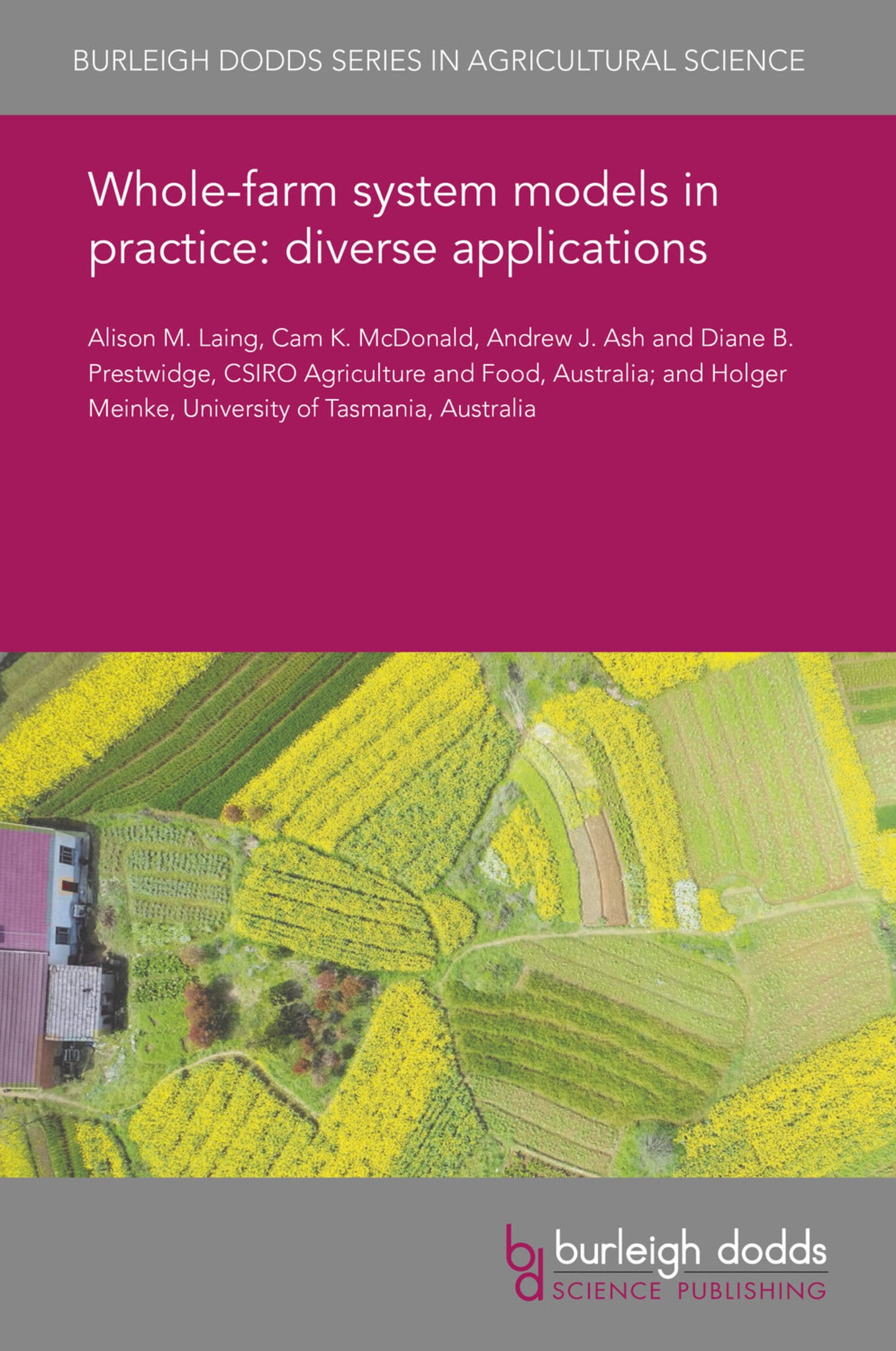We're sorry. An error has occurred
Please cancel or retry.
Whole-farm system models in practice: diverse applications
Dr alison m. laing,
Dr cam k. mcdonald,
Dr andrew j. ash,
Dr diane b. prestwidge,
Prof holger meinke
Regular price
£25.00
Sale price
£25.00
Regular price
£25.00
Unit price
/
per
Sale
Sold out
Re-stocking soon
The challenges of contemporary agriculture are causing farmers to seek models of whole-farm goals, which requires mathematically-based modeling grounded in the latest scientific understanding of an...
Read More

Some error occured while loading the Quick View. Please close the Quick View and try reloading the page.
Couldn't load pickup availability
- Format:
-
02 December 2019

The challenges of contemporary agriculture are causing farmers to seek models of whole-farm goals, which requires mathematically-based modeling grounded in the latest scientific understanding of animal growth and reproduction, crop physiology, soil and environmental sciences, as well as economics and human relations. Such models are often invaluable tools in the process of undertaking nuanced, multifaceted management decisions at the farm system level. This chapter explores model selection and, through a series of case studies, whole farm modelling in both smallholder systems and single enterprise farm businesses. Finally, the chapter looks ahead to future research trends in this area.

Price: £25.00
Publisher: Burleigh Dodds Science Publishing
Imprint: Burleigh Dodds Science Publishing
Series: Burleigh Dodds Series in Agricultural Science
Publication Date:
02 December 2019
ISBN: 9781786765178
Format: eBook
BISACs:
TECHNOLOGY & ENGINEERING / Agriculture / Sustainable Agriculture, Agronomy and crop production, TECHNOLOGY & ENGINEERING / Agriculture / Agronomy / Crop Science, Sustainable agriculture

1 Introduction 2 Model selection 3 The development and evolution of a suite of whole-farm models: a case study 4 Whole-farm modelling in smallholder systems: IAT 5 Whole-farm modelling for a single enterprise farm business: NABSA 6 Future trends 7 Conclusion 8 Where to look for further information 9 References



